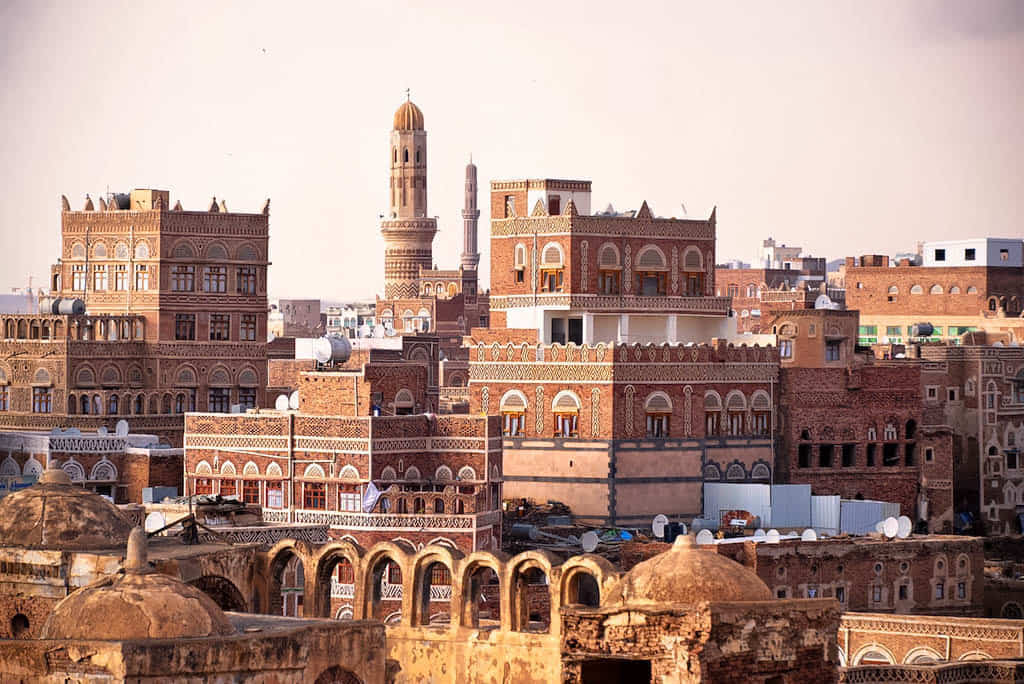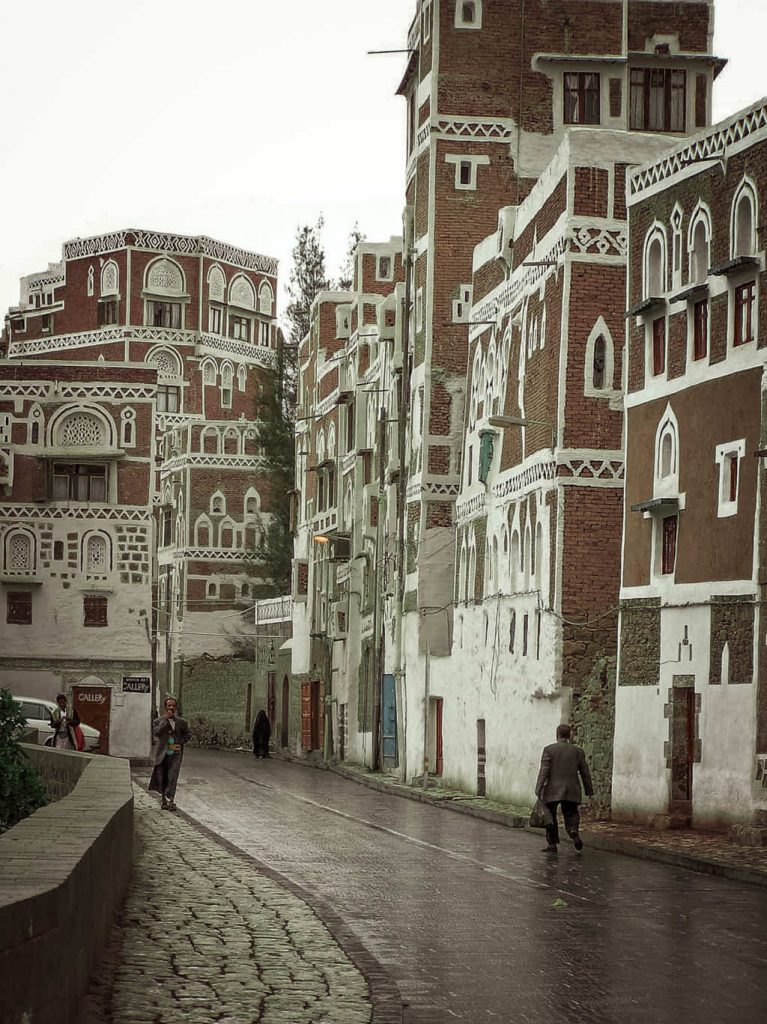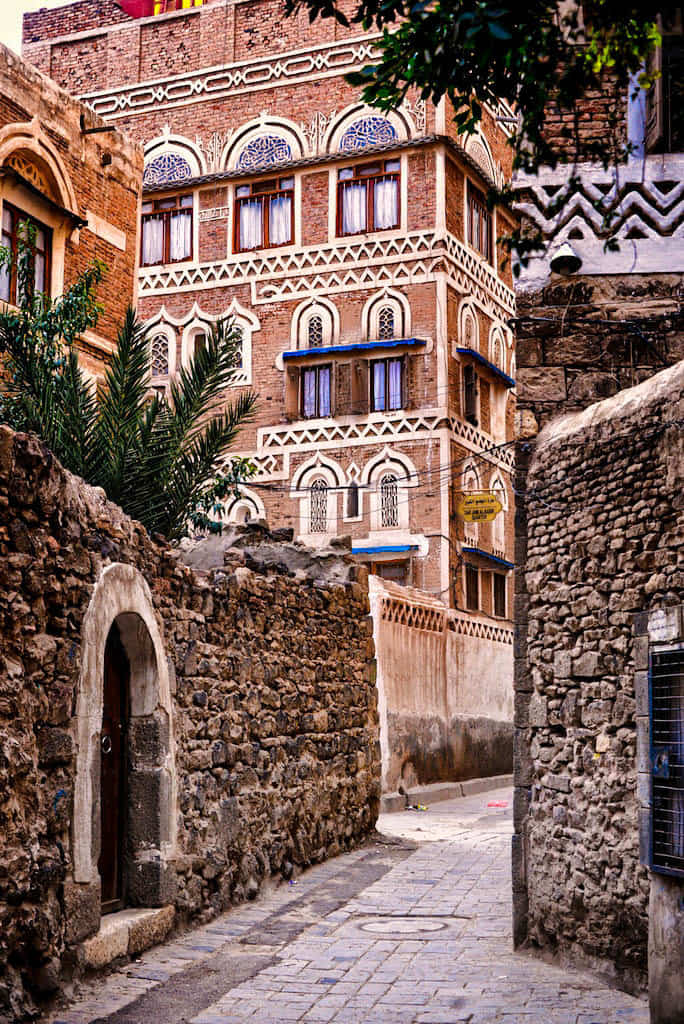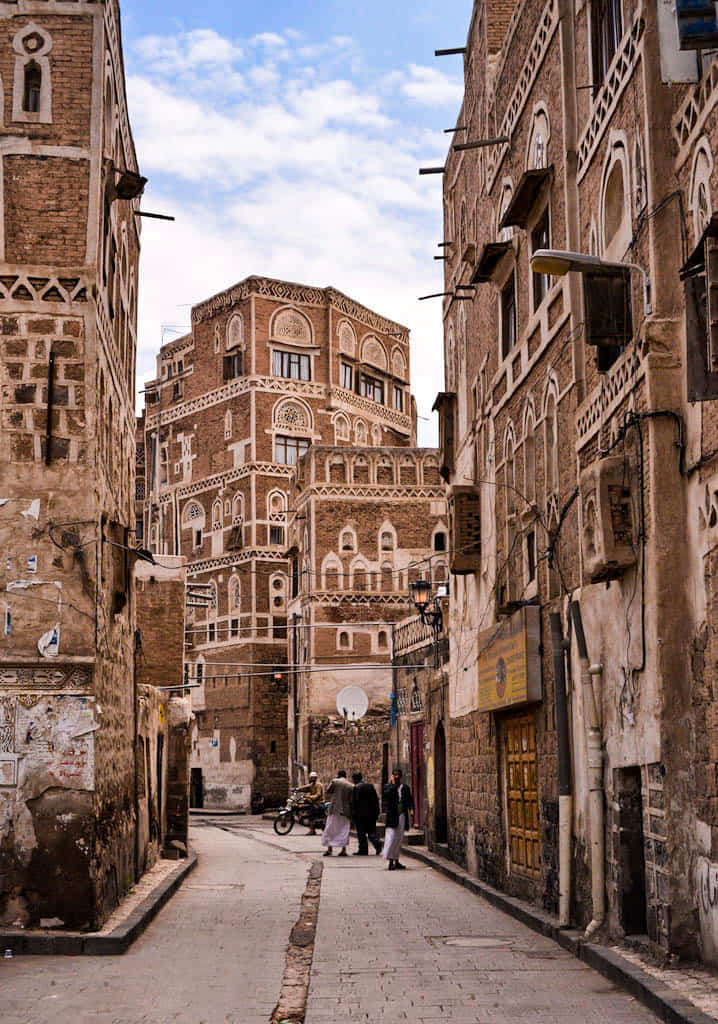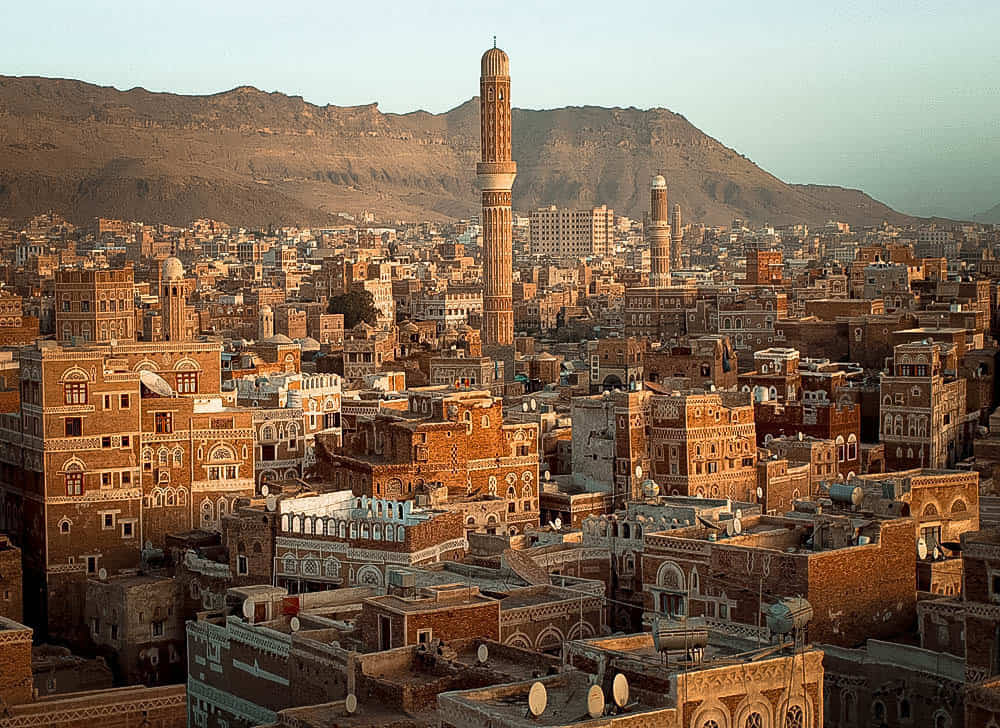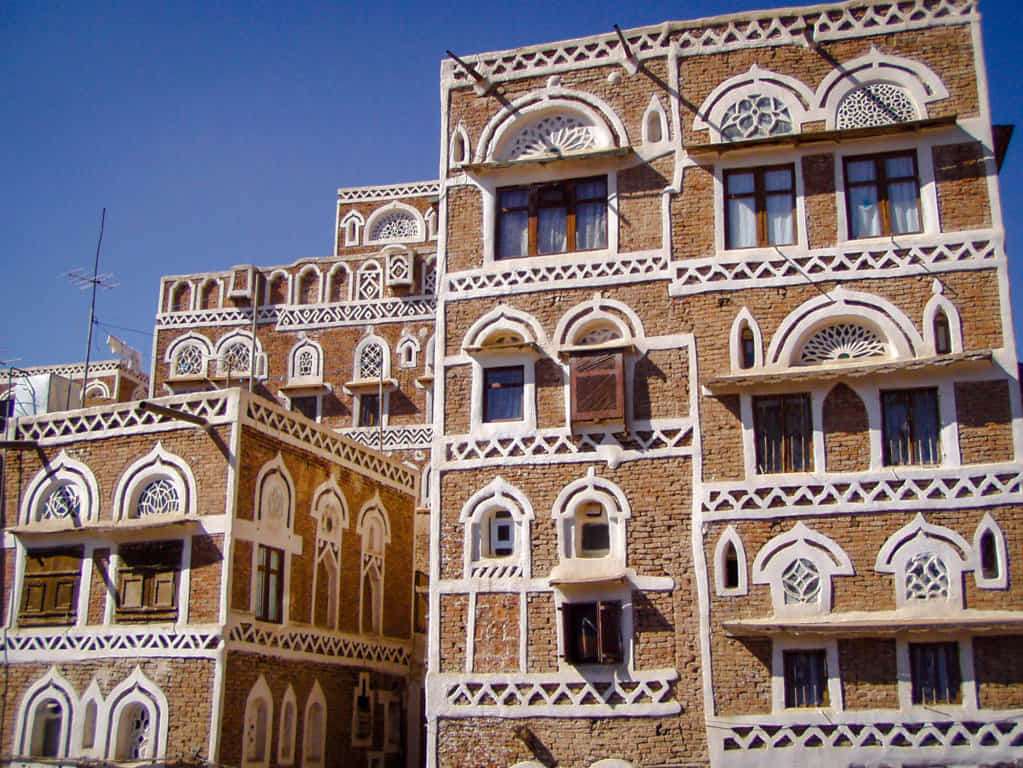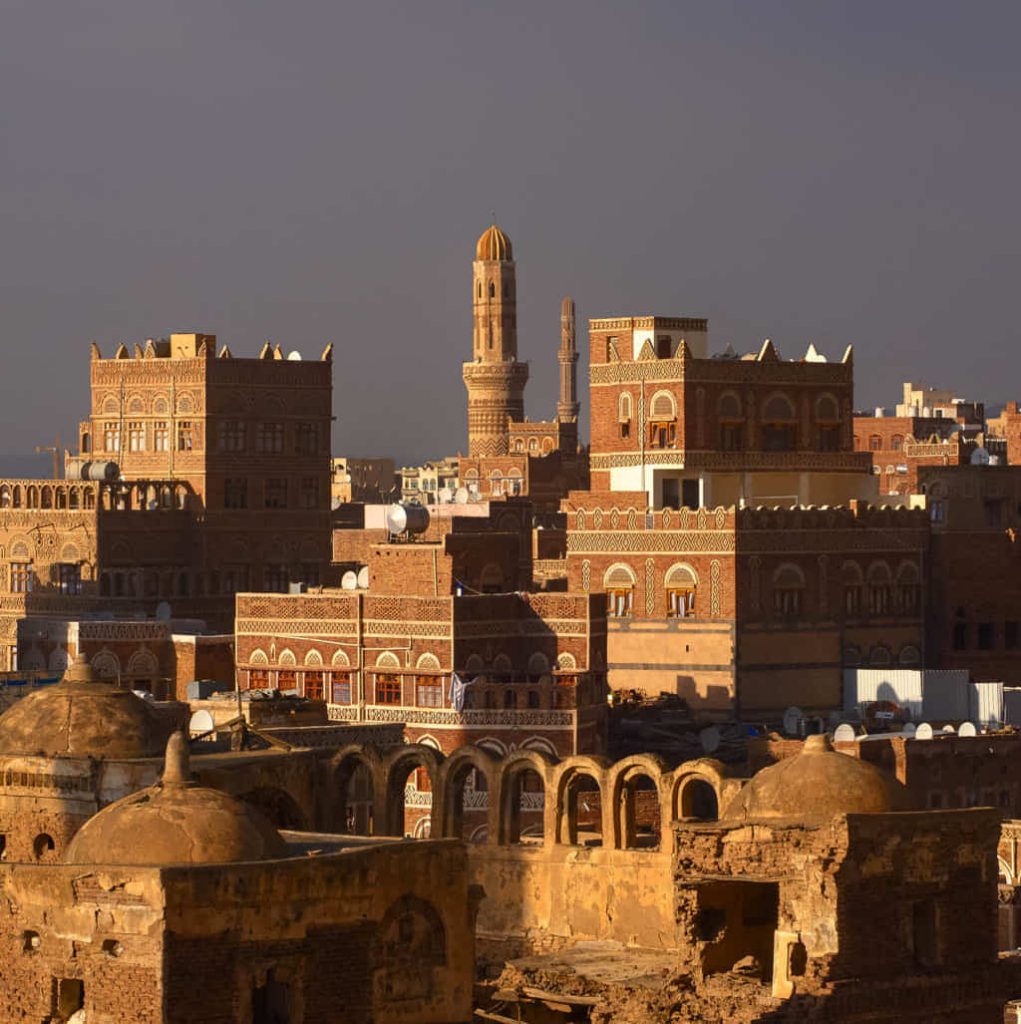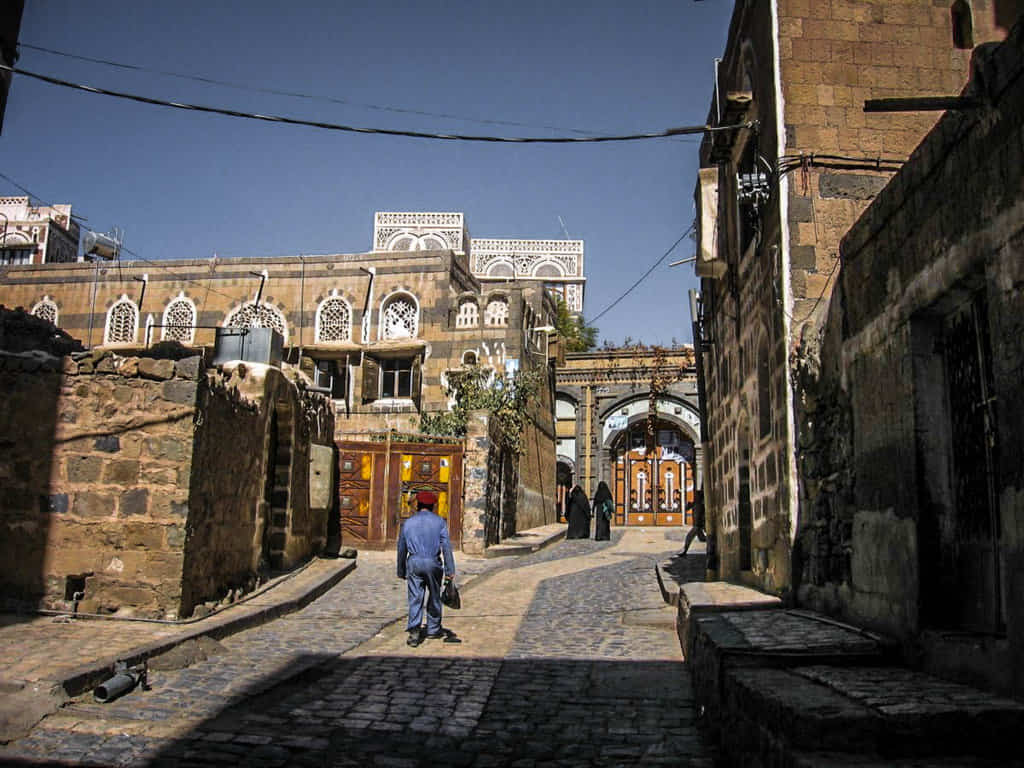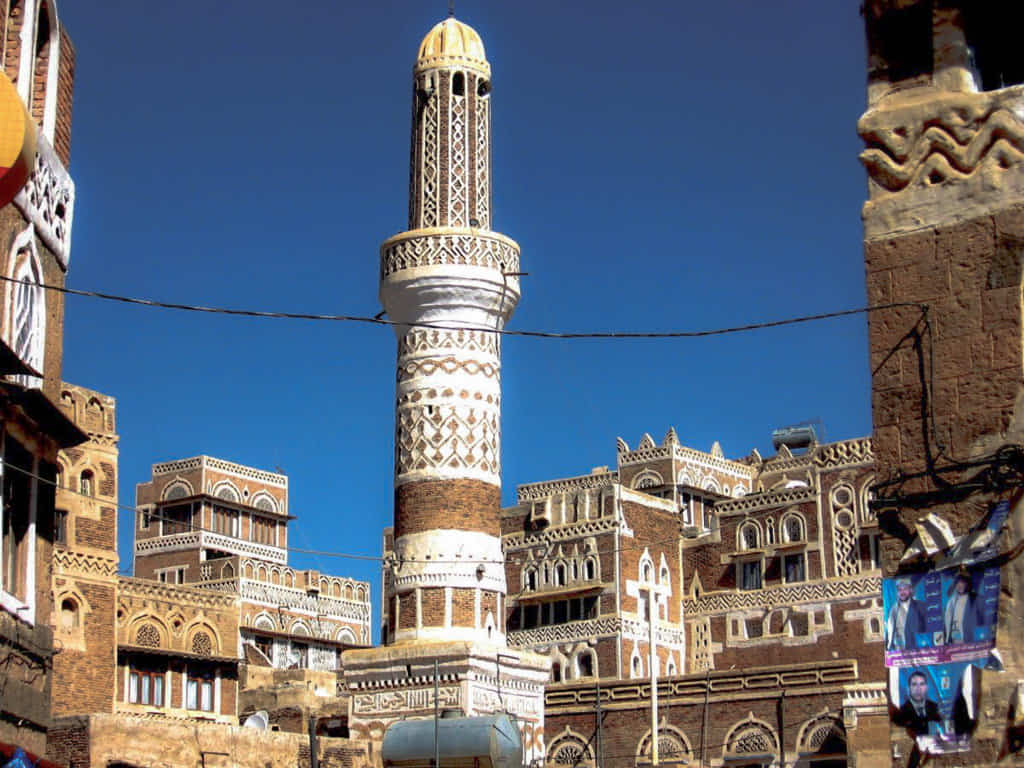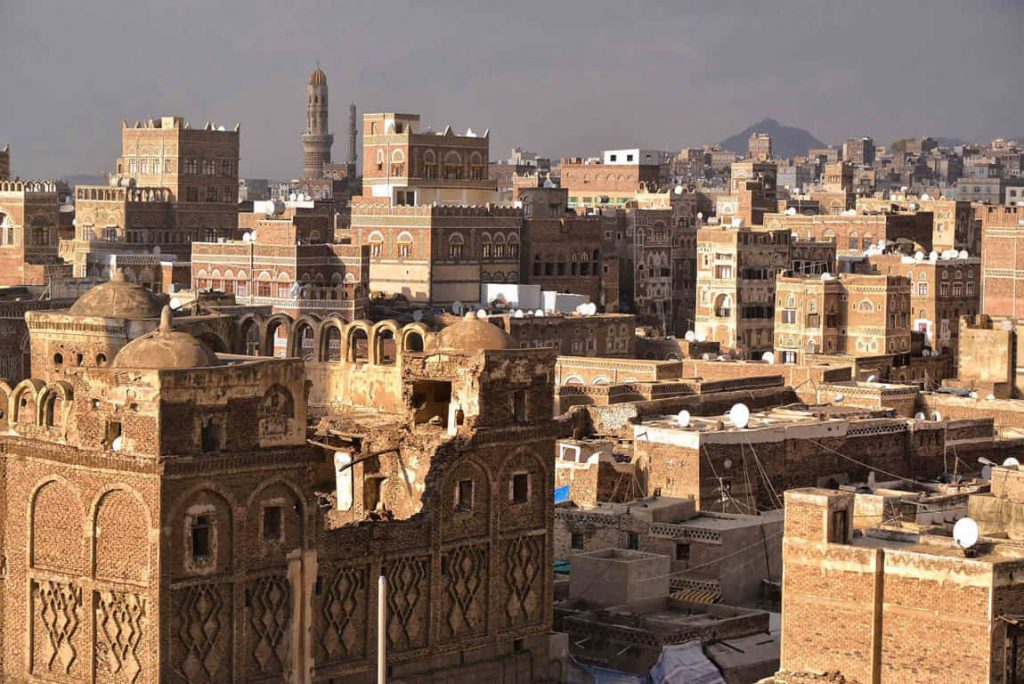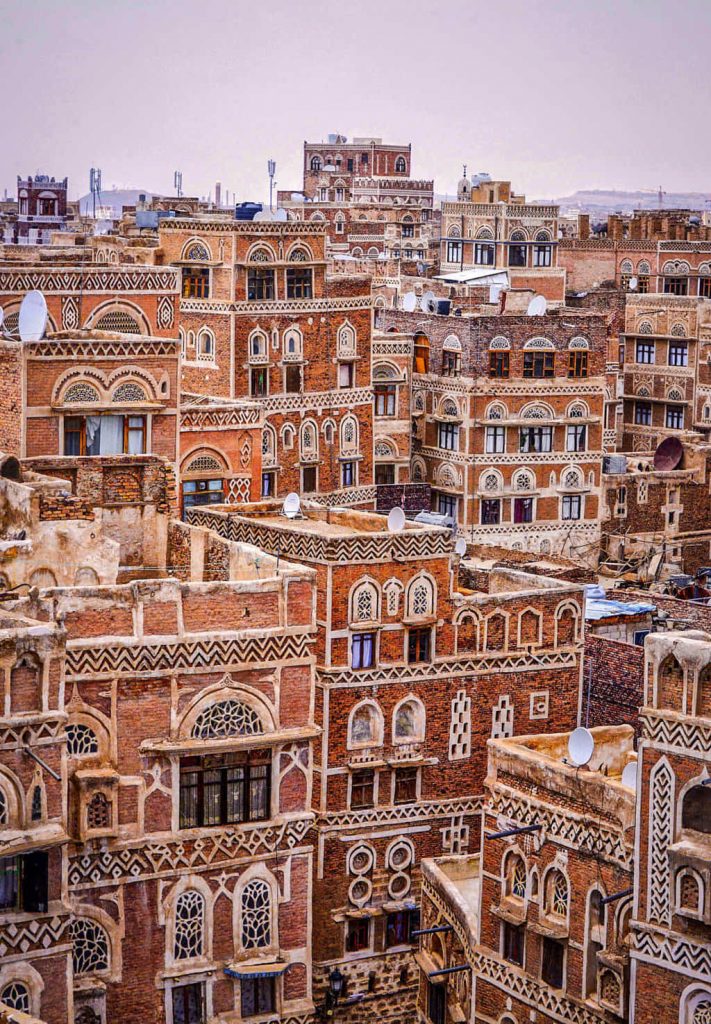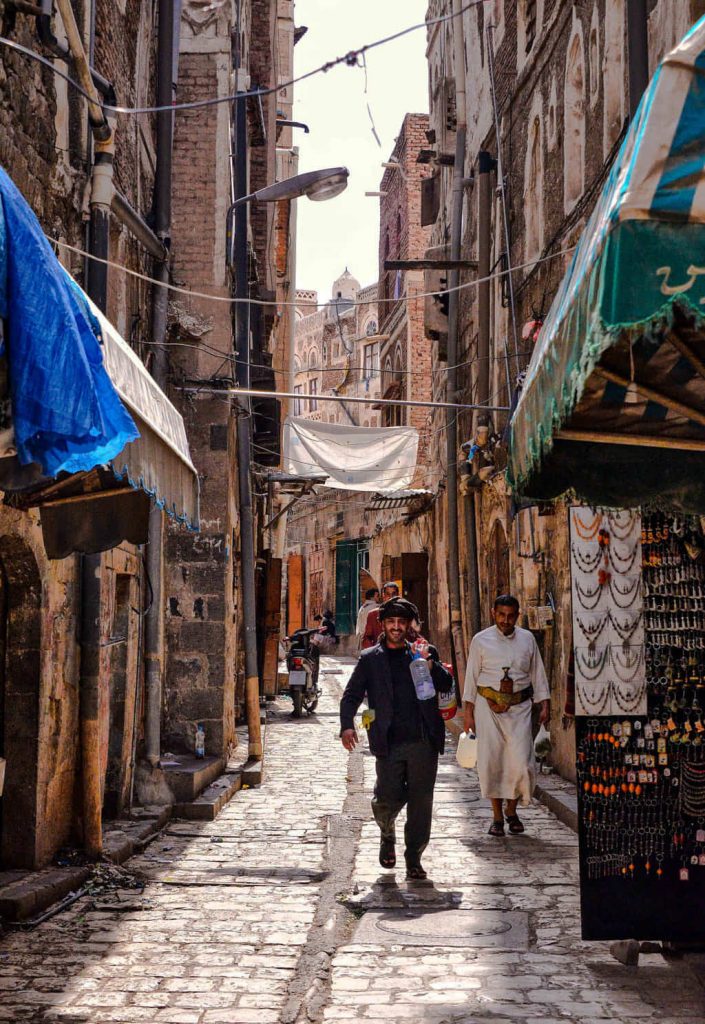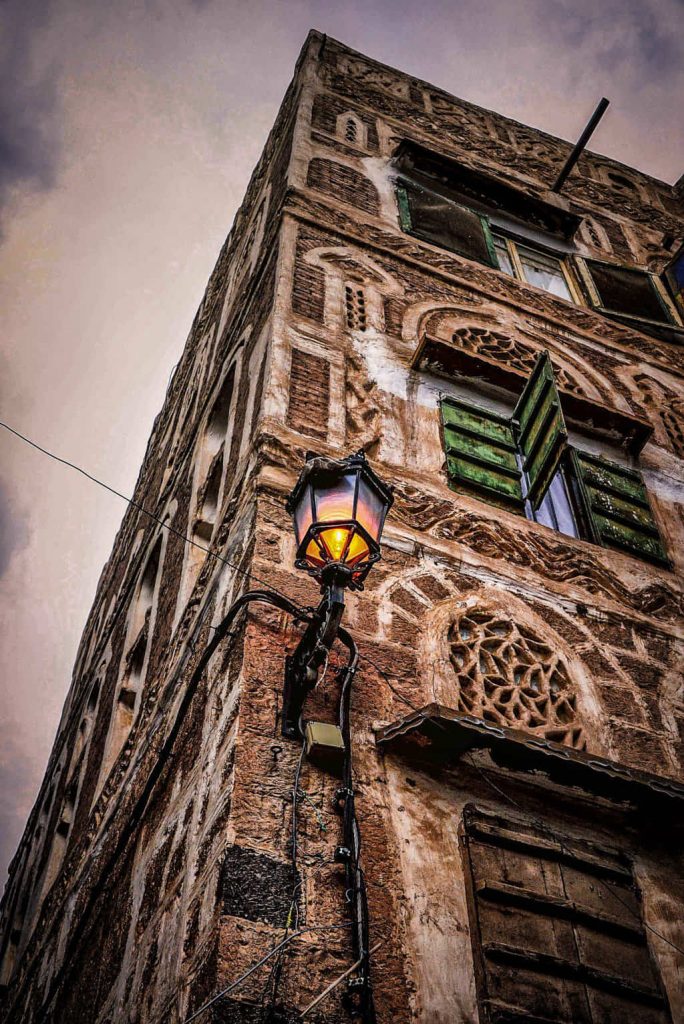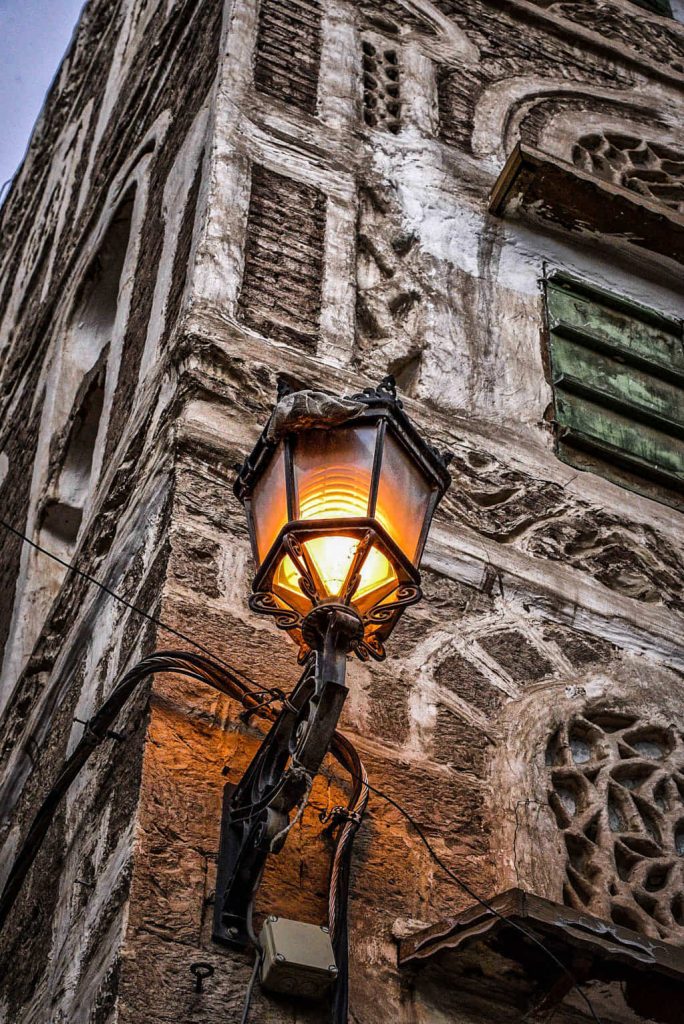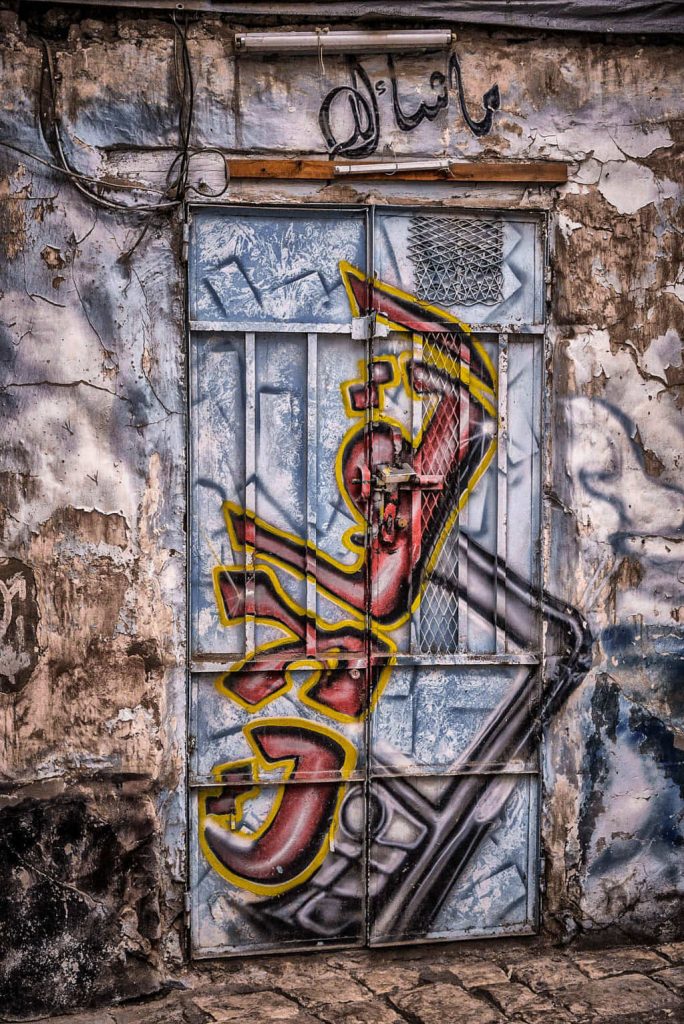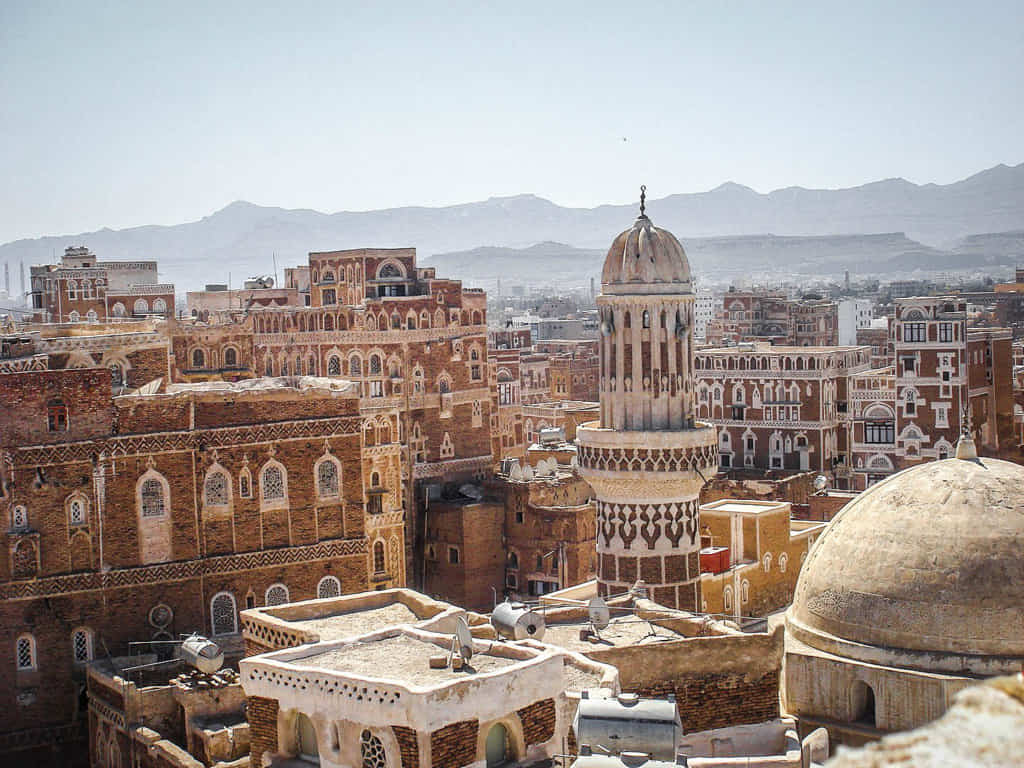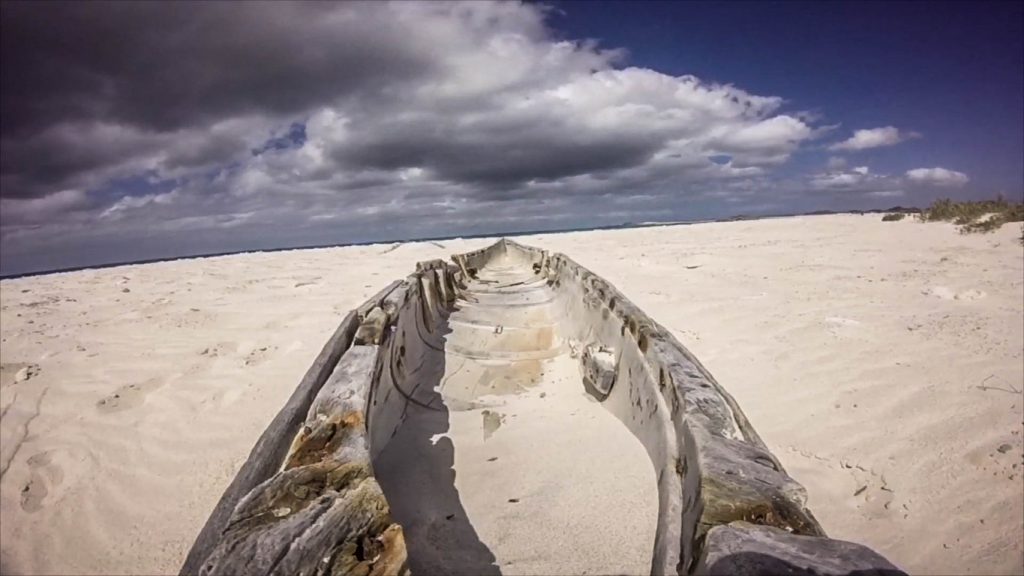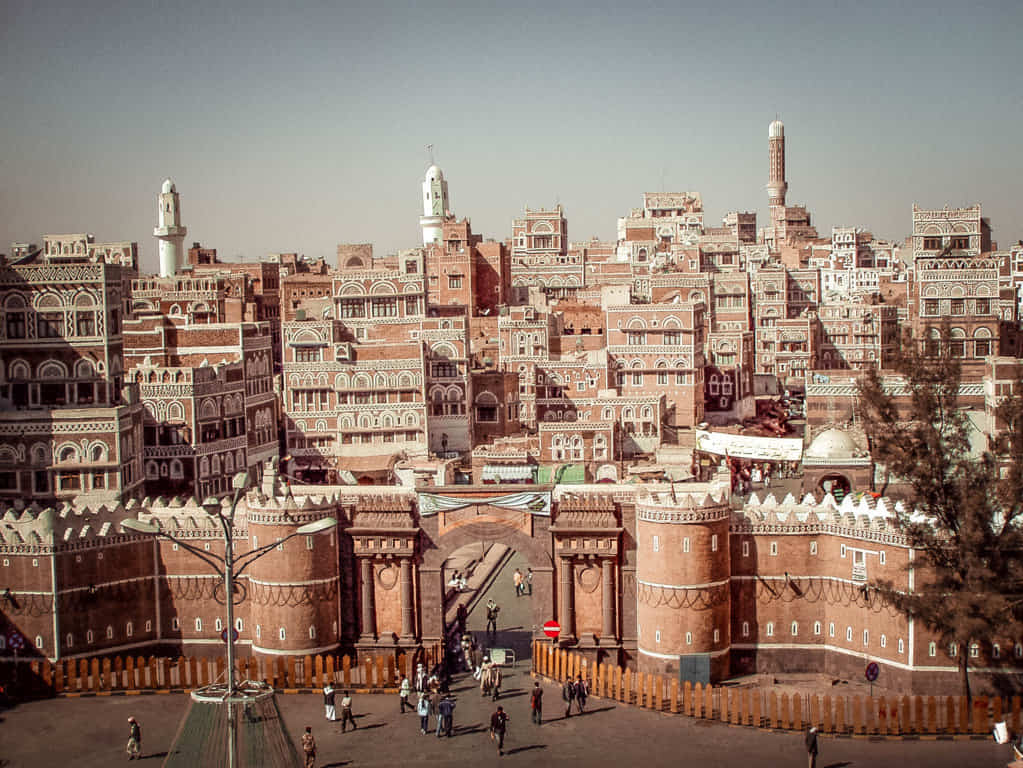Sana’a, Yemen
Coordinates: 15.355900, 44.213500
Nearby Places
- Talha Mosque, old town Sana’a 0.24 Km SW (209°)
- Great Mosque of Sana’a 0.34 Km SE (154°)
- Bab al Yemen, Sana’a 0.57 Km SE (154°)
The capital Sana’a has been around since at least the 2nd century AD. The story goes, that it was founded by Hz. Nuh عليه السلام son Hz. Shem عليه السلام to keep control of the passage of caravans loaded with frankincense coming from Hadhramawt.
Islamic History
The Sana’a manuscript, found in Sana’a in 1972, is one of the oldest Quranic manuscripts in existence From the era of Prophet Muhammad ﷺ until the founding of independent sub-states in many parts of the Yemen Islamic Caliphate, Sana’a persisted as the governing seat.
Hz. Imam Al-Shafi’i رحمة الله عليه visit to Sana’a
Imam Al-Shafi’i, the 8th-century Islamic jurist and founder of the Shafi’i school of jurisprudence, visited Sana’a several times. He praised the city, writing “La budda min Sana’a, or “Sana’a must be seen.”
Mentioned by Other Historians
In the 9th–10th centuries, the Yemeni geographer al-Hamdani took note of the city’s cleanliness, saying “The least dwelling there has a well or two, a garden and long cesspits separate from each other, empty of ordure, without smell or evil odours, because of the hard concrete and fine pastureland and clean places to walk.
Later in the 10th-century, the Persian geographer Ibn Rustah wrote of Sana’a “It is the city of Yemen — there cannot be found a city greater, more populous or more prosperous, of nobler origin or with more delicious food than it.”
Clash of Dynasties
In 1062 Sana’a was taken over by the Sulayhid dynasty led by Ali al-Sulayhi and his wife, the famous Queen Asma. He made the city capital of his relatively small kingdom, which also included the Haraz Mountains. The Sulayhids were aligned with the Ismaili Muslim-leaning Fatimid Caliphate of Egypt, rather than the Baghdad-based Abbasid Caliphate that most of Arabia followed. Al-Sulayhi ruled for about 20 years, but he was assassinated by his principal local rivals, the Zabid-based Najahids. Following his death, al-Sulayhi’s daughter, Arwa al-Sulayhi, inherited the throne. She withdrew from Sana’a, transferring the Sulayhid capital to Jibla, where she ruled much of Yemen from 1067 to 1138. As a result of the Sulayhid departure, the Hamdanid dynasty took control of Sana’a.
Hz. Salahuddin رحمة الله عليه Expedition
In 1173 Saladin, the Ayyubid sultan of Egypt, sent his brother Turan-Shah on an expedition to conquer Yemen. The Ayyubids gained control of Sana’a in 1175 and united the various Yemeni tribal states, except for the northern mountains controlled by the Zaydi imams, into one entity. The Ayyubids switched the country’s official religious allegiance to the Sunni Muslim Abbasids. During the reign of the Ayyubid emir Tughtekin ibn Ayyub, the city underwent significant improvements. These included the incorporation of the garden lands on the western bank of the Sa’ilah, known as Bustan al-Sultan, where the Ayyubids built one of their palaces. Despite Sana’a’s strategic position, the Ayyubids chose Ta’izz as their capital while Aden was their principal income-producing city.
Recognition as a World Heritage
The Old City of Sana’a is recognised as a UNESCO World Heritage Site. The old fortified city has been inhabited for more than 2,500 years and contains many intact architectural gems.
The oldest, partially standing architectural structure in the Old City of Sana’a is Ghumdan Palace. Efforts are underway to preserve some of the oldest buildings, some of which, such as the Samsarh and the Great Mosque of Sana’a, are more than 1,400 years old. Surrounded by ancient clay walls that stand 9–14 metres high, the Old City contains more than 100 mosques, 12 hammams (baths) and 6,500 houses. Many of the houses resemble ancient skyscrapers, reaching several stories high and topped with flat roofs. They are decorated with elaborate friezes and intricately carved frames and stained-glass windows.
One of the most popular attractions is Suq al-Milh (Salt Market), where it is possible to buy salt along with bread, spices, raisins, cotton, copper, pottery, silverware, and antiques. The 7th-century Jami al-Kabir (the Great Mosque) is one of the oldest mosques in the world. The Bab al-Yaman is an iconized entry point through the city walls and is more than 1,000 years old.
Commercial Area of the city
A commercial area of the Old City is known as Al Madina, where development is proceeding rapidly. In addition to three large hotels, there are numerous stores and restaurants. The area also contains three parks and the President’s palace. The National Museum of Yemen is located here.
Sources
Image Sources
1620px-Sanaa_market
By Ferdinand Reus from Arnhem, Holland – yemen, CC BY-SA 2.0, https://commons.wikimedia.org/w/index.php?curid=6121123
OldtownSanaa
By Jtamad – Own work, CC BY-SA 4.0, Link
Old_sanaa
By Antti Salonen – Own work, CC BY-SA 3.0, https://commons.wikimedia.org/w/index.php?curid=12863716
PluieSanaa
By Antti Salonen – Own work, CC BY-SA 3.0, https://commons.wikimedia.org/w/index.php?curid=12863716
Old_City,_Sana’a
can
1488px-Old_City,Sanaá,_Yemen(16481016932)
By Rod Waddington from Kergunyah, Australia – Old City, Sanaá, Yemen, CC BY-SA 2.0, https://commons.wikimedia.org/w/index.php?curid=38615537
Old_Sana’a,Yemen(14211436599)
By Rod Waddington from Kergunyah, Australia – Old Sana’a, Yemen, CC BY-SA 2.0, https://commons.wikimedia.org/w/index.php?curid=36667701
Old_Sana’a,Yemen(14378515831)
By Rod Waddington from Kergunyah, Australia – Old Sana’a, Yemen, CC BY-SA 2.0, https://commons.wikimedia.org/w/index.php?curid=36667743
1440px-Sana’a_House
By Aneta Ribarska – Own work, CC BY-SA 3.0, https://commons.wikimedia.org/w/index.php?curid=29650618
San’a03_flickr
By ai@ce – Flickr, CC BY 2.0, https://commons.wikimedia.org/w/index.php?curid=1593056
1498px-Old_Sanaa,Yemen(10732756906)
By Rod Waddington from Kergunyah, Australia – Old Sana’a, Yemen, CC BY-SA 2.0, https://commons.wikimedia.org/w/index.php?curid=29765749
1618px-Old_Sanaa,Yemen(9720765715)
By Rod Waddington from Kergunyah, Australia – Old Sana’a, Yemen, CC BY-SA 2.0, https://commons.wikimedia.org/w/index.php?curid=29766191
Sana’a,Yemen(14667934933)
By Rod Waddington from Kergunyah, Australia – Sana’a, Yemen, CC BY-SA 2.0, https://commons.wikimedia.org/w/index.php?curid=36667463


